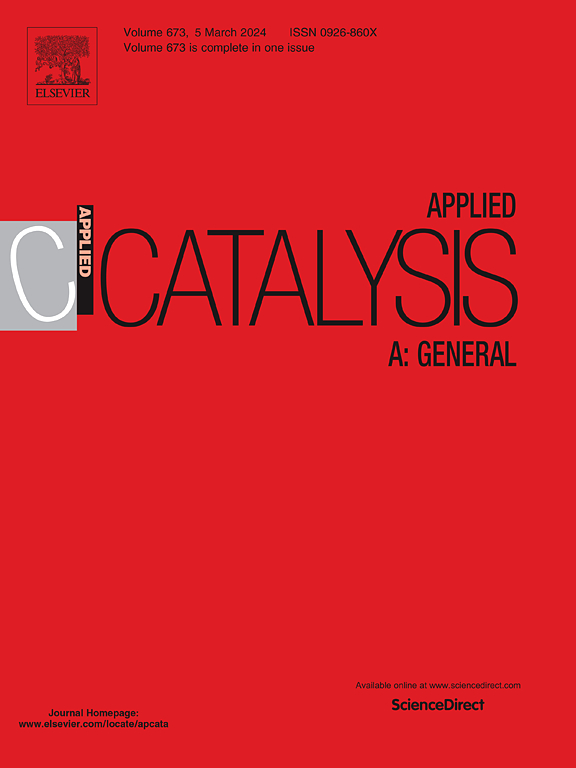溶剂诱导木糖在Zr-Beta沸石上一锅催化转化为高产γ-戊内酯
IF 4.7
2区 化学
Q2 CHEMISTRY, PHYSICAL
引用次数: 0
摘要
以木糖为原料制备γ-戊内酯(γ-valerolactone, GVL)的研究备受关注,但由于反应路径较长,仍是一个巨大的挑战。在1,4-二氧六环/异丙醇共溶剂中,采用β-沸石负载的zr基催化剂,建立了木糖直接转化为GVL的简易催化体系,收率为54.3% %,创历史新高。以Zr(NO3)4·5 H2O为Zr源时,β-沸石结构保留良好,比表面积和孔体积较大,Zr物质分散性较好,酸位平衡,Brønsted酸位的增加促进了糠醛在级联反应中开环。值得注意的是,1,4-二氧六环的引入通过稀释异丙醇和木糖之间的竞争吸附行为,促进了糠醛的原位形成(即产率决定步骤),使更多的木糖分子进入活性中心,从而促进了GVL的顺序生产,并获得了意想之外的高产率。本研究为木糖制备GVL提供了一种高效、简便的方法,为实现高原子经济性铺平了道路。本文章由计算机程序翻译,如有差异,请以英文原文为准。
Solvent-induced one-pot catalytic conversion of xylose to high yield γ-valerolactone over Zr-Beta zeolite
The efficient production of γ-valerolactone (GVL) with high yield directly from xylose is of particular interest but remains a great challenge due to the long reaction path. We herein developed a facile catalytic system to directly convert xylose to GVL with a record-high yield of 54.3 %, employing β-zeolite supported Zr-based catalyst in 1,4-dioxane/isopropanol co-solvent. Using Zr(NO3)4·5 H2O as the Zr sources resulting in well-retained β-zeolite structure, larger surface area and pore volume and better dispersion of Zr species, as well as balanced acidic sites where higher amount of Brønsted acid sites promoted the ring-opening of furfural alcohol for this cascade reaction. Notably, the introduction of 1,4-dioxane facilitated the in situ formation of furfural (i.e. yield-determining step) by diluting the competitive adsorption behavior between isopropanol and xylose, allowing more xylose molecules to access the active center, thus promoting the sequential production of GVL with unexpectedly high yield. The present work provides a efficient and straightforward preparation of GVL from xylose, paving the pathway towards higher atom economy.
求助全文
通过发布文献求助,成功后即可免费获取论文全文。
去求助
来源期刊

Applied Catalysis A: General
化学-环境科学
CiteScore
9.00
自引率
5.50%
发文量
415
审稿时长
24 days
期刊介绍:
Applied Catalysis A: General publishes original papers on all aspects of catalysis of basic and practical interest to chemical scientists in both industrial and academic fields, with an emphasis onnew understanding of catalysts and catalytic reactions, new catalytic materials, new techniques, and new processes, especially those that have potential practical implications.
Papers that report results of a thorough study or optimization of systems or processes that are well understood, widely studied, or minor variations of known ones are discouraged. Authors should include statements in a separate section "Justification for Publication" of how the manuscript fits the scope of the journal in the cover letter to the editors. Submissions without such justification will be rejected without review.
 求助内容:
求助内容: 应助结果提醒方式:
应助结果提醒方式:


